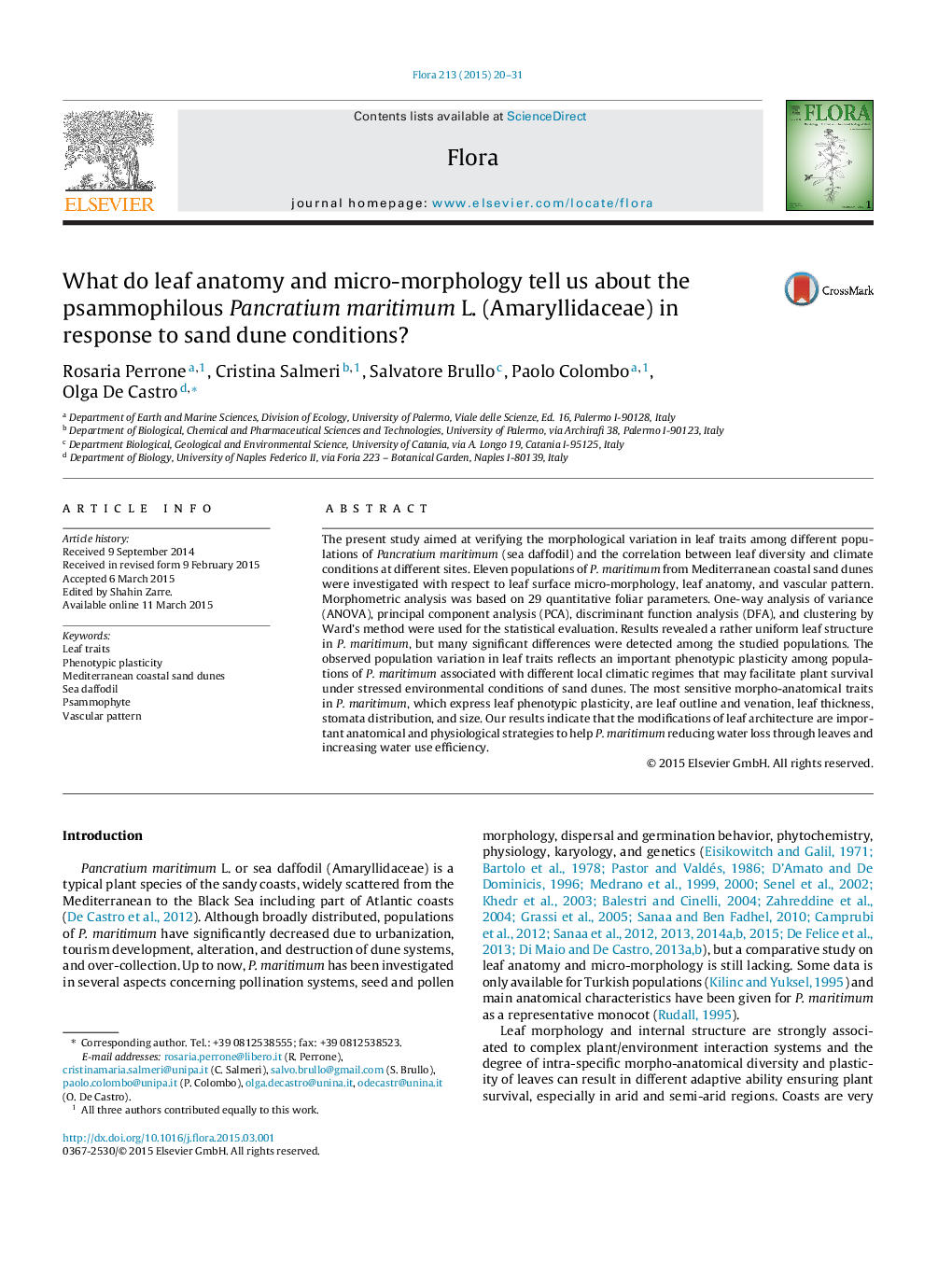| کد مقاله | کد نشریه | سال انتشار | مقاله انگلیسی | نسخه تمام متن |
|---|---|---|---|---|
| 2179382 | 1549946 | 2015 | 12 صفحه PDF | دانلود رایگان |

• We study key aspect of micro-morphology and leaf anatomy of psammophilous Pancratium maritimum.
• Significant differences among leaves were detected among the Pancratium populations.
• Variation in leaf traits reflect an important phenotypic plasticity of Pancratium populations.
• Leaves difference may facilitate plant survival under stressed sand dunes environmental condition.
• Two clearly defined clusters among Pancratium populations were detected.
The present study aimed at verifying the morphological variation in leaf traits among different populations of Pancratium maritimum (sea daffodil) and the correlation between leaf diversity and climate conditions at different sites. Eleven populations of P. maritimum from Mediterranean coastal sand dunes were investigated with respect to leaf surface micro-morphology, leaf anatomy, and vascular pattern. Morphometric analysis was based on 29 quantitative foliar parameters. One-way analysis of variance (ANOVA), principal component analysis (PCA), discriminant function analysis (DFA), and clustering by Ward’s method were used for the statistical evaluation. Results revealed a rather uniform leaf structure in P. maritimum, but many significant differences were detected among the studied populations. The observed population variation in leaf traits reflects an important phenotypic plasticity among populations of P. maritimum associated with different local climatic regimes that may facilitate plant survival under stressed environmental conditions of sand dunes. The most sensitive morpho-anatomical traits in P. maritimum, which express leaf phenotypic plasticity, are leaf outline and venation, leaf thickness, stomata distribution, and size. Our results indicate that the modifications of leaf architecture are important anatomical and physiological strategies to help P. maritimum reducing water loss through leaves and increasing water use efficiency.
Journal: Flora - Morphology, Distribution, Functional Ecology of Plants - Volume 213, May 2015, Pages 20–31